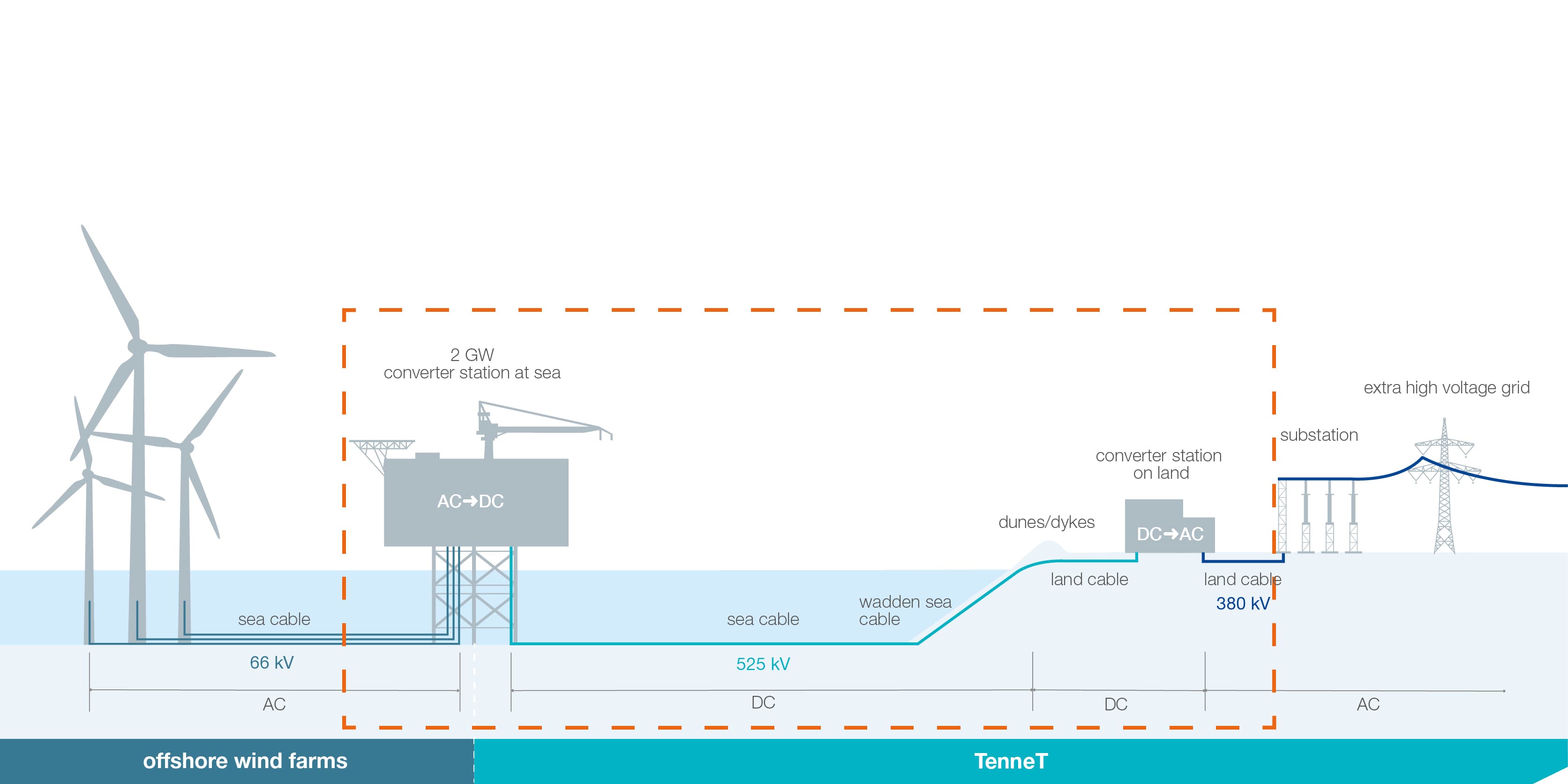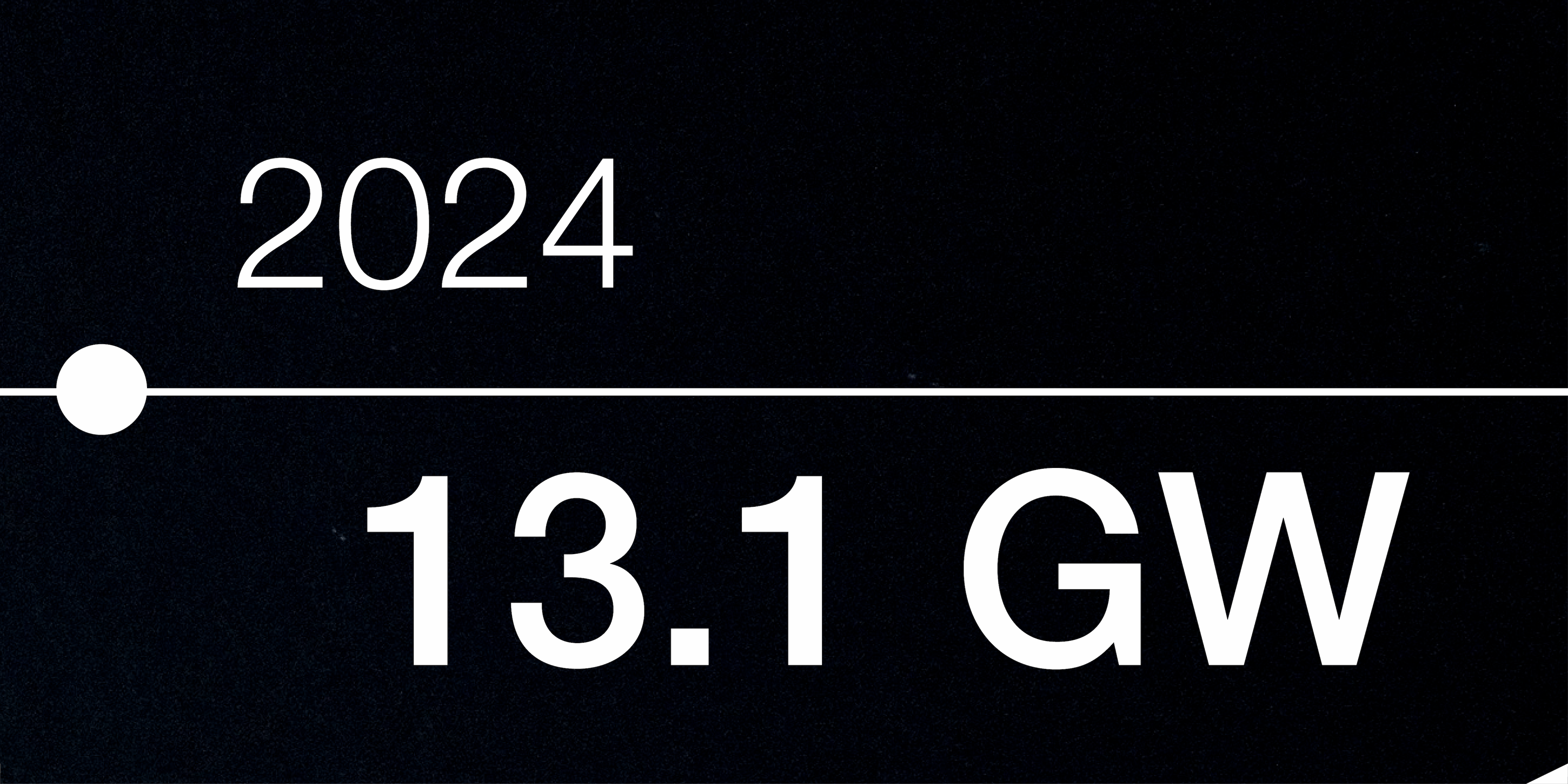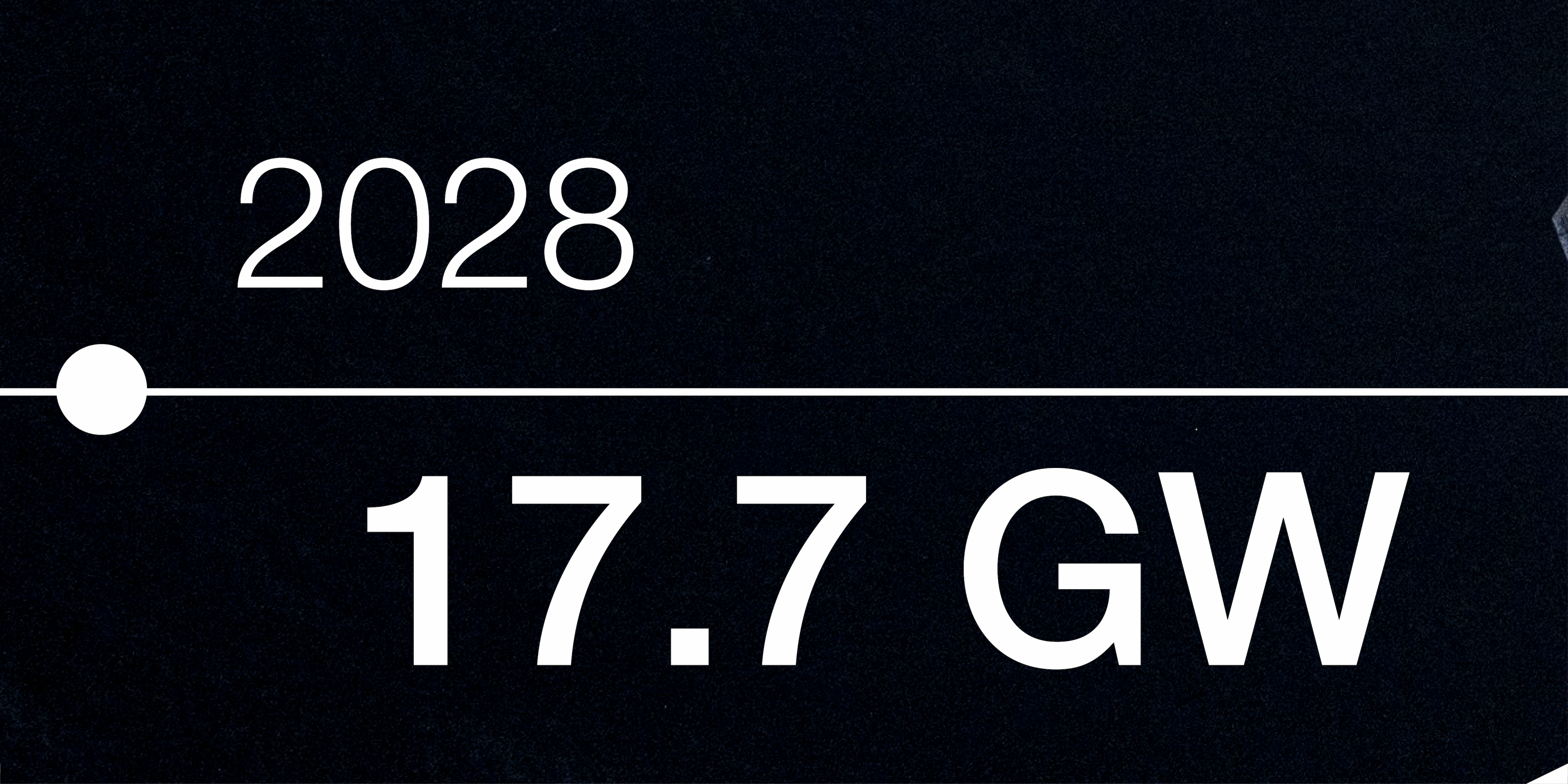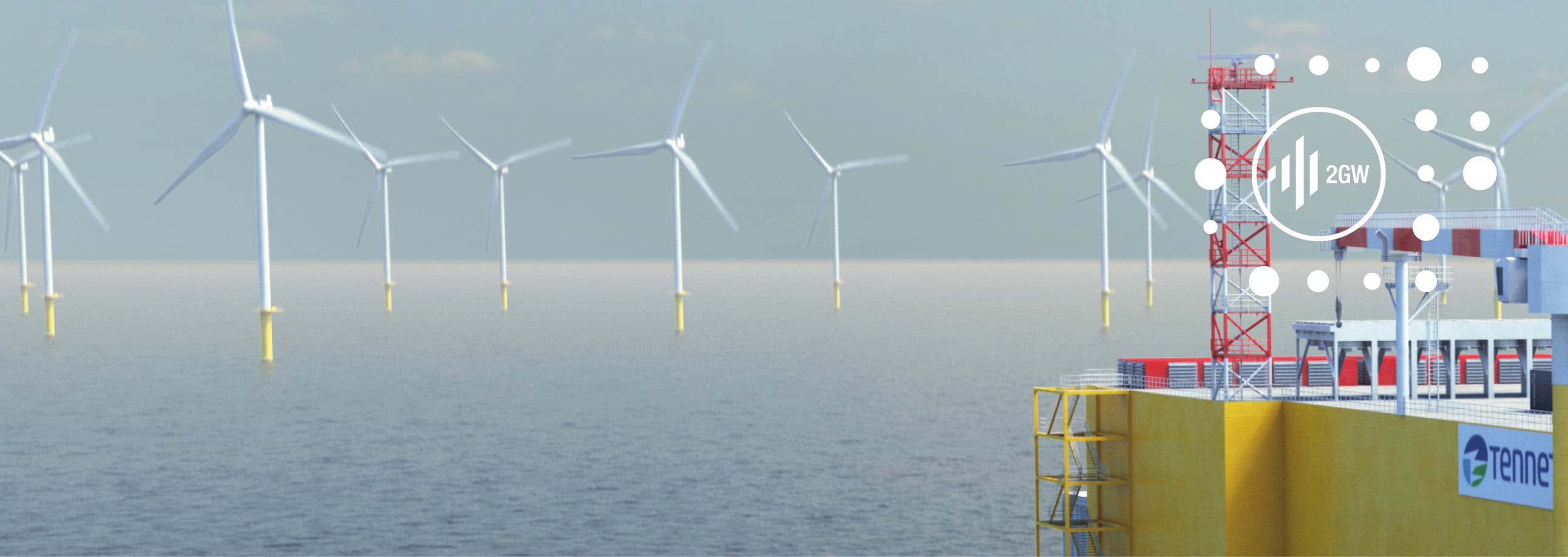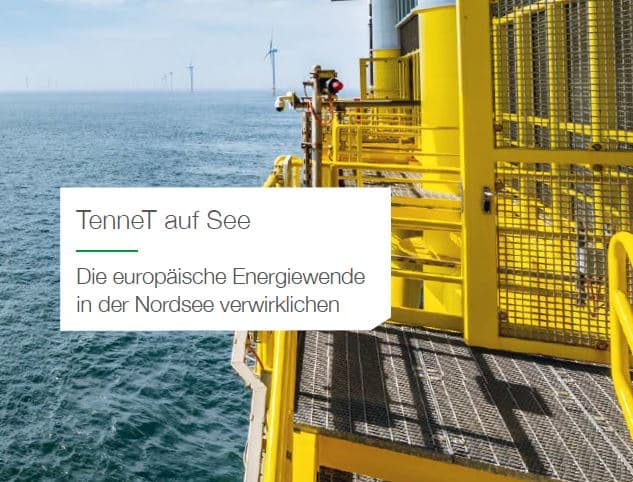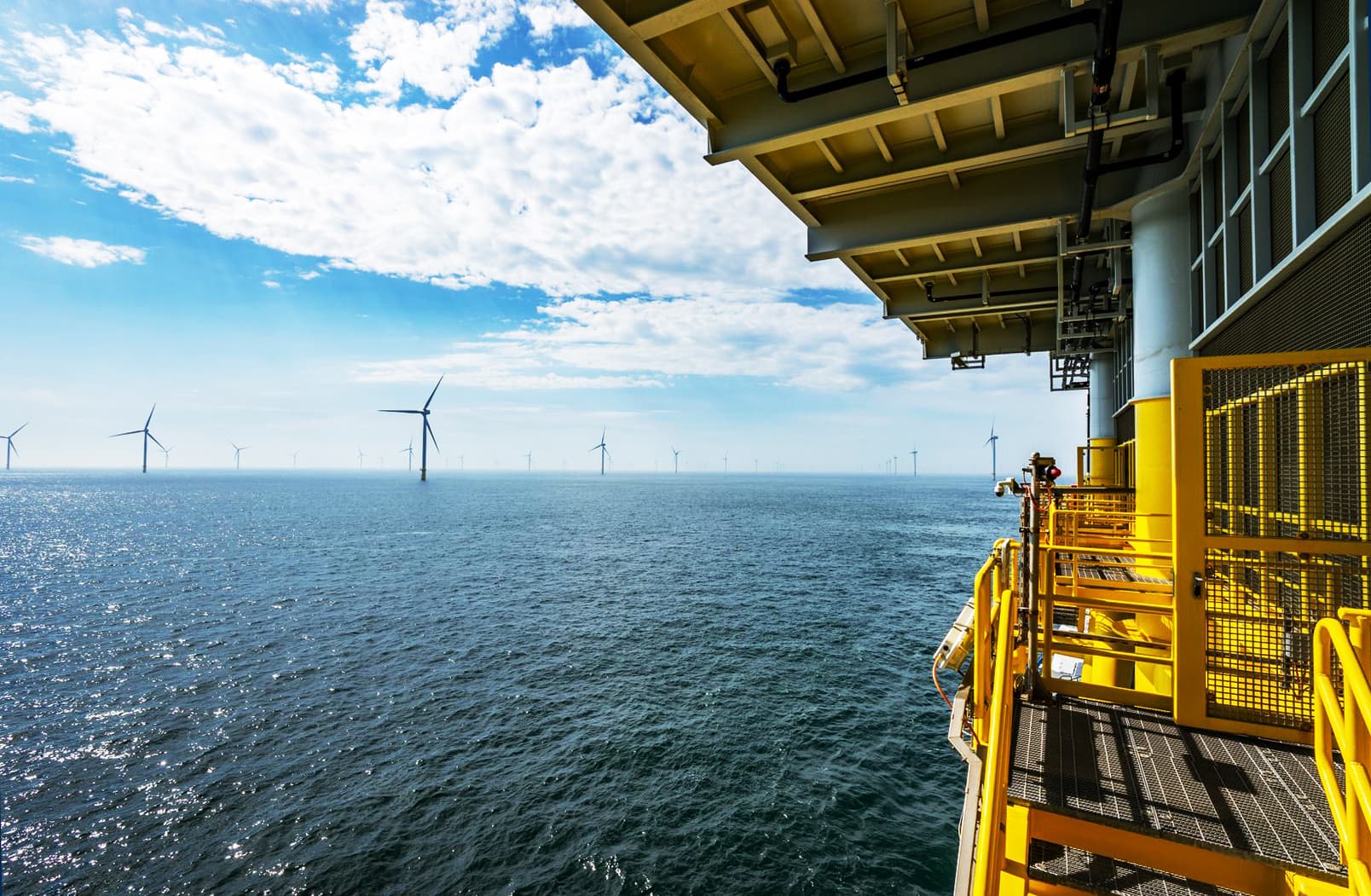
TenneT Offshore
Driving the European energy transition from the North Sea
Our role
Securing supply of green wind energy
TenneT is the leading offshore transmission system operator (TSO) in the European Union. With our vast experience in offshore grid development and innovative solutions in that field, we help to secure a stable supply of green energy for European households and industry alike – in an efficient, safe and sustainable way. That is our obligation. That is our expertise. That is the responsibility we shoulder.
With our current offshore grid connection systems, we safely transmit more than half of the EU’s entire offshore wind capacity from sea to land. To satisfy rising demand for green energy in Europe, we are working hard and systematically to expand our offshore energy grid – at an increasing pace.
We close the gap
Delivering green energy safely from sea to land
TenneT gets the job done
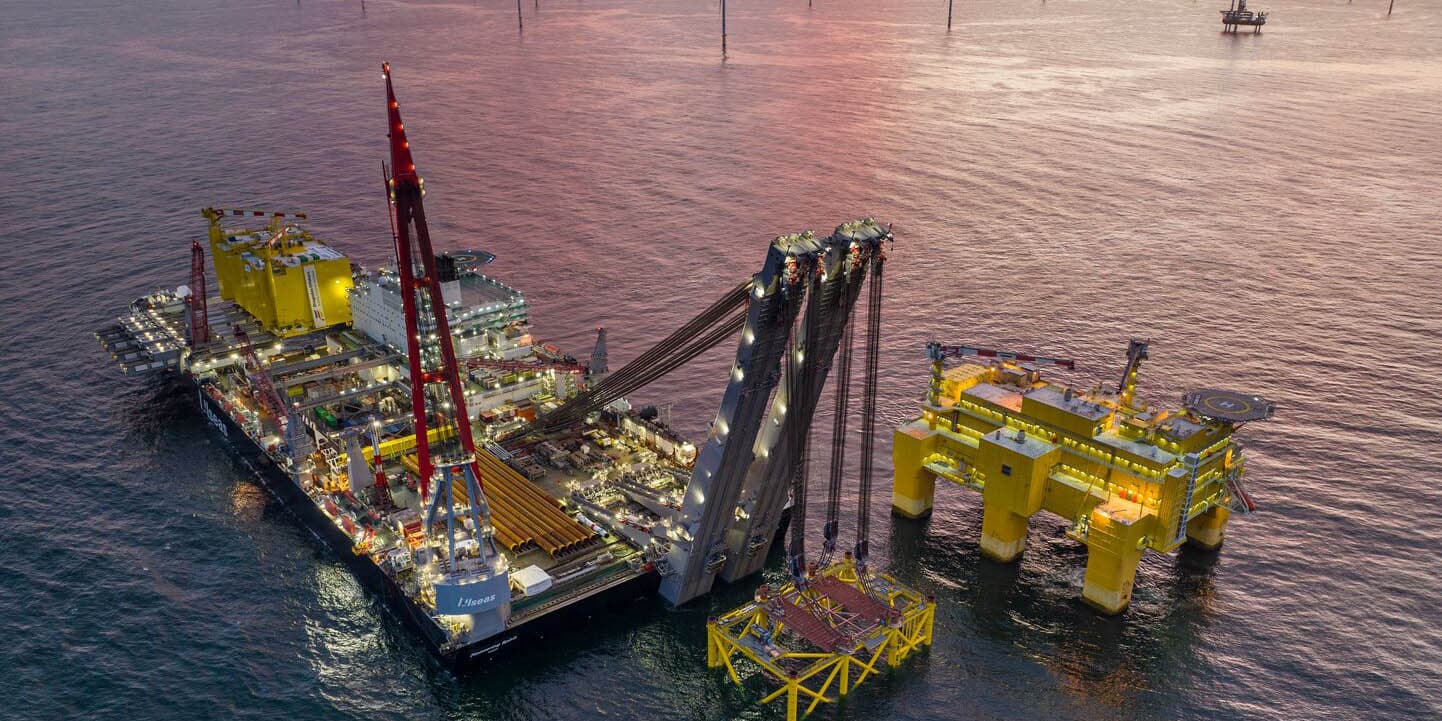
Develop
We source, develop and plan the energy landscape of the future. With a clear vision in mind we lay the foundation.
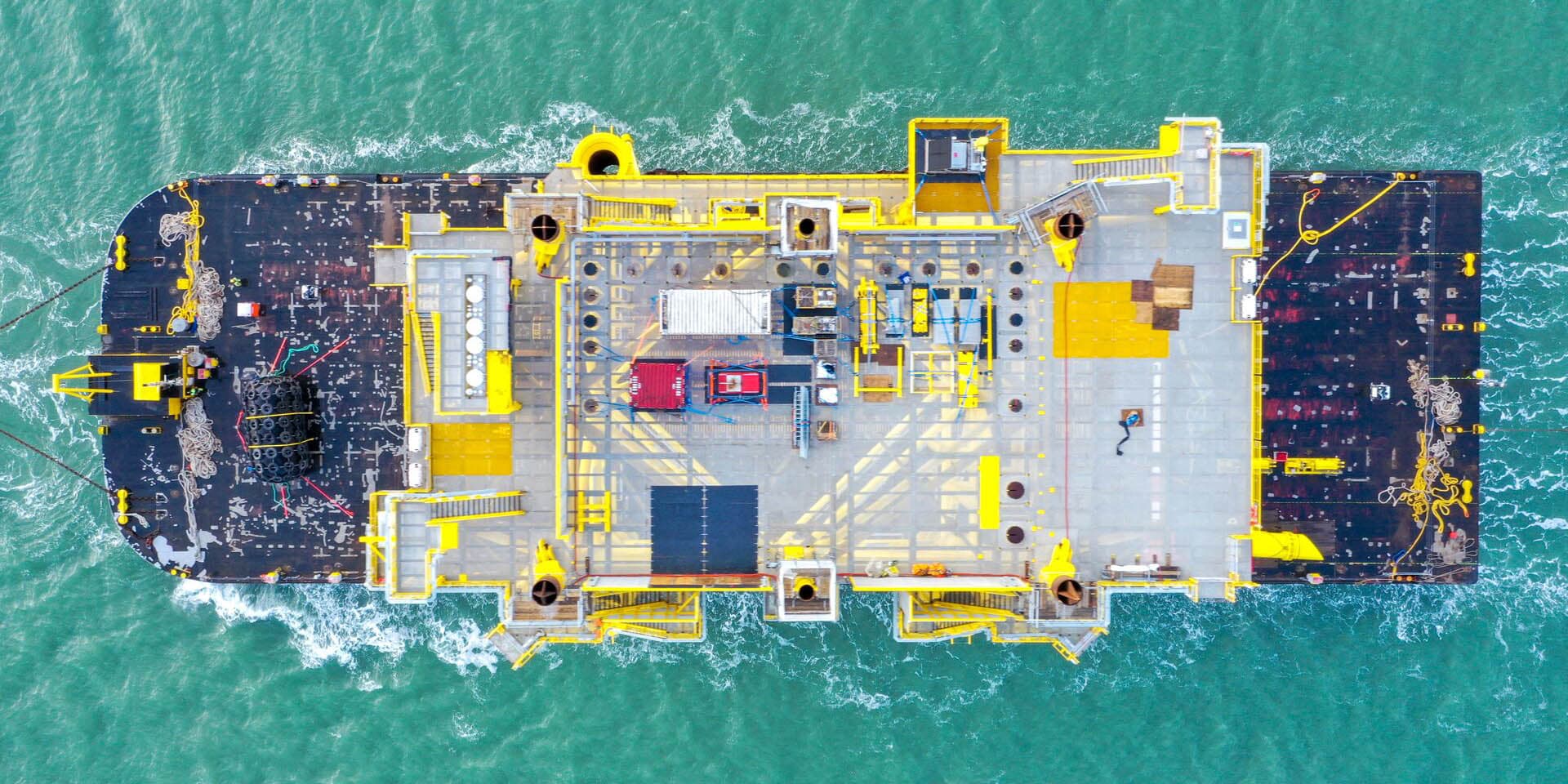
Build
Together with our partners we plan and install our assets in time, scope and budget.
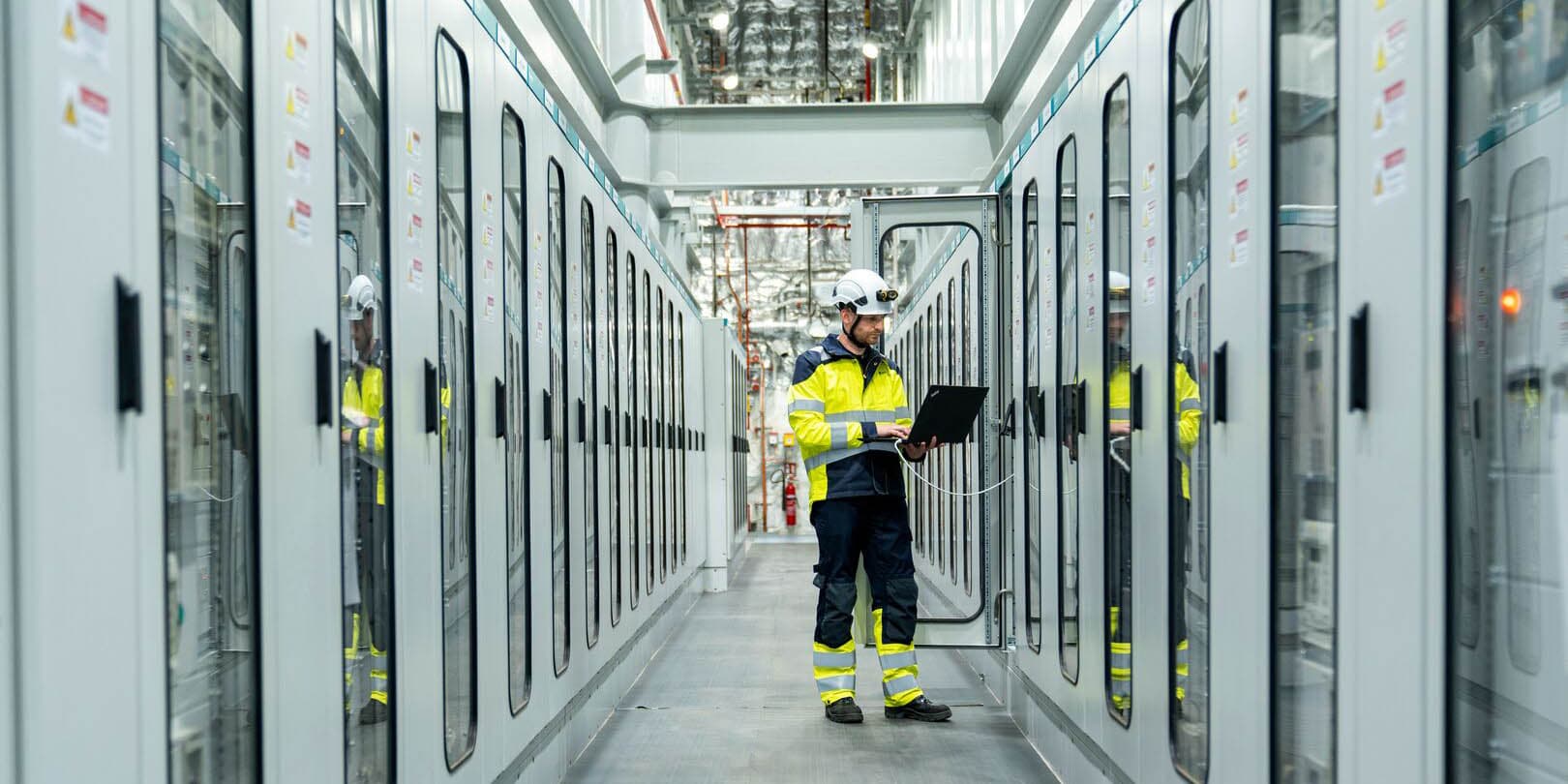
Maintain
We maintain and safely operate our offshore grid connection systems over decades. We keep our offshore grid running – in all weathers, 24 hours a day, and with the greatest care for our people and the environment.
Our vision
Harnessing the full potential of our green powerhouse North Sea
Europe is determined to become the first climate-neutral continent by 2050. Germany even aims to achieve net zero by 2045. Meanwhile, compared to 1990 levels, the Netherlands plans to reduce its greenhouse gas emissions by 49% by 2030 and by 95% by 2050. As a green transmission system operator (TSO), TenneT embraces these goals and supports both countries and the EU on their individual and collective journeys.
These will entail a major increase in electrification. In the EU, the share of electricity in the energy system is expected to grow from around 20% today to more than 50% in 2050. Without a doubt, to meet rising demand and achieve net zero, member states must quickly ramp up their renewable energy supplies. Part of the solution to this, however, is right on our doorstep.
300 GW of clean wind energy…
could be generated from the North Sea to achieve Europe’s offshore energy goals. These capacities will help to meet the continuously rising demand for electricity in the EU.
This equals to more than 1,000 TWh per year…
and could cover the annual electricity demand in Germany, Denmark, the Netherlands as well as the UK. That’s almost 30% of Europe’s current total demand.
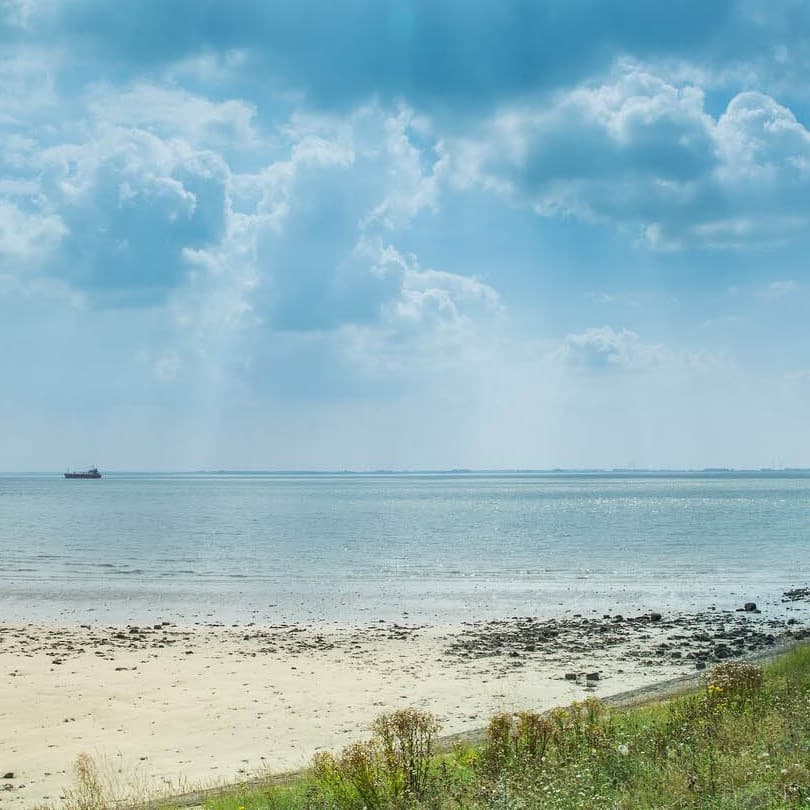
The European Union has acknowledged the North Sea’s great potential and set ambitious offshore energy goals: it targets at least 60 GW of offshore wind capacities by 2030 and 300 GW by 2050. Member states additionally defined goals of their own. Some have gone even further than the EU:
In the Esbjerg Declaration Belgium, Denmark, Germany and the Netherlands agreed on a combined production of 65 GW of offshore wind energy from the North Sea by 2030. By 2050, the offshore output is to climb to 150 GW – a tenfold increase compared to today.
Germany, the largest economic player in Europe with many energy-intensive industries, plans to deliver at least 30 GW by 2030, 40 GW by 2035 and 70 GW by 2040.
The Netherlands wants to multiply its current capacity by six, from 3.5 to 21 GW by 2031.
We have got all the right answers
In dialogue with TenneT’s CEO

Manon van Beek, CEO at TenneT |
Why the North Sea? “At TenneT, we believe that the North Sea holds the key to achieving the European offshore energy goals. No other place in Europe offers so much potential for a green, safe and independent energy supply.” Why TenneT? “As we operate in both the Netherlands and Germany – two of the most important countries bordering the North Sea when it comes to offshore wind energy – we are ideally positioned to create synergies and international alliances and to get the job done. This bi-nationality sets us apart from other TSOs and will create a network that will strengthen the security of supply for the Netherlands and Germany as well as Europe in general. We are making a unique contribution to energy security and the energy transition. From the North Sea – for all of Europe.” How? “We can rely on decades of experience and know-how when it comes to connecting offshore wind farms to land. With our innovative technologies, we can help Europe to harness the North Sea’s great potential.” |
Our Grid
Connecting Europe every day
With our offshore solutions and initiatives, we are supporting the European energy transition and helping to make Europe’s energy supply safe and independent. We draw on the knowledge gained from implementing 17 offshore grid connections and four interconnectors that transmit green energy across European borders in the North Sea region. Our four interconnectors are beacons of European energy cooperation and connect Denmark, Germany, the Netherlands, Norway and the United Kingdom. Combined, they transmit 3.8 GW.
Together, our grid connection systems and interconnectors cover more than 3,600 km and transmit 14.4 GW of electricity – or enough to supply more than 18 million European households with clean energy. Learn more…
However, to reach the ambitious offshore goals, we have to keep pushing. In addition to rapidly increasing capacities, Europe must also urgently expand its offshore grid to safely bring the much-needed green energy from sea to land.
To make this happen, TenneT will invest more than €40 billion in offshore grid expansion by 2031, making us one of the largest investors in Europe’s path to a green energy future. We will more than triple our current capacity. This will be a mammoth task and one for that all of us – industry, politics and society as a whole – must pull together.
Down to the number
Capacity counter for TenneT’s offshore grid connection systems
Our future offshore grid
2023
17 offshore grid connection systems with a total capacity of 10.6 GW.
2031
38 offshore grid connection systems with a total capacity of 45 GW.

Our innovations
Facilitating acceleration through technological evolution and standardisation
The acceleration in grid expansion needed will be supported by increasing the individual transmission capacity per system while introducing comprehensive standardisation at the same time. At TenneT, we have made this challenge our mission and are now making it a reality.
We have put our emphasis at an early stage on developing new standards for offshore grid connection systems. Through standardised models and technological innovations, we aim to make planning and implementing new offshore grid connections much easier and more efficient and to thereby make wind energy from the North Sea scalable. This way, we have saved time, resources and money – and have helped to deliver more and more power from sea to land. And we keep going ahead. Ever since our first connection, we have continuously developed new standards to transmit ever-larger capacities of energy from the North Sea: from 700 MW alternating current (AC) to 400 MW direct current (DC) to 900 MW DC to, most recently, a whole new level: our new 2 GW high-voltage direct current (HVDC) standard for offshore grid connection systems. This has the capacity to handle an energy volume more than twice as large as previous systems.
The evolution of standards
2 GW back then and now
With its immense degree of harmonisation and its strong focus on interoperability, our new 2 GW standard lays the urgently needed foundation for a much stronger form of European energy cooperation: a fully meshed European cross-border HVDC offshore grid system in which green wind energy can be allocated flexibly and used much more efficiently among the North Sea states.

We are convinced that offshore hubs will also play a key role in this future and facilitate the smart use of wind energy. TenneT is currently working on planning the first offshore hubs in both the Netherlands and Germany. Here, we are drawing on our extensive knowledge and studies from the North Sea Wind Power Hub (NSWPH) programme. This programme has evolved from the initial vision of a large international energy island into a modular concept of smaller, linkable hubs.
Furthermore, we need hubs to connect off- and onshore grids. With the concept for a wind power booster, we presented a concrete and visionary idea in 2021 of how the expansion of offshore wind energy can be accelerated through the long-term meshing of the DC grid at sea and on land as well as through the clever integration of industry and electrolysis projects. In addition, together with 50Hertz, TenneT will be building Europe’s first multiterminal hub together in the Heide region of Schleswig-Holstein.

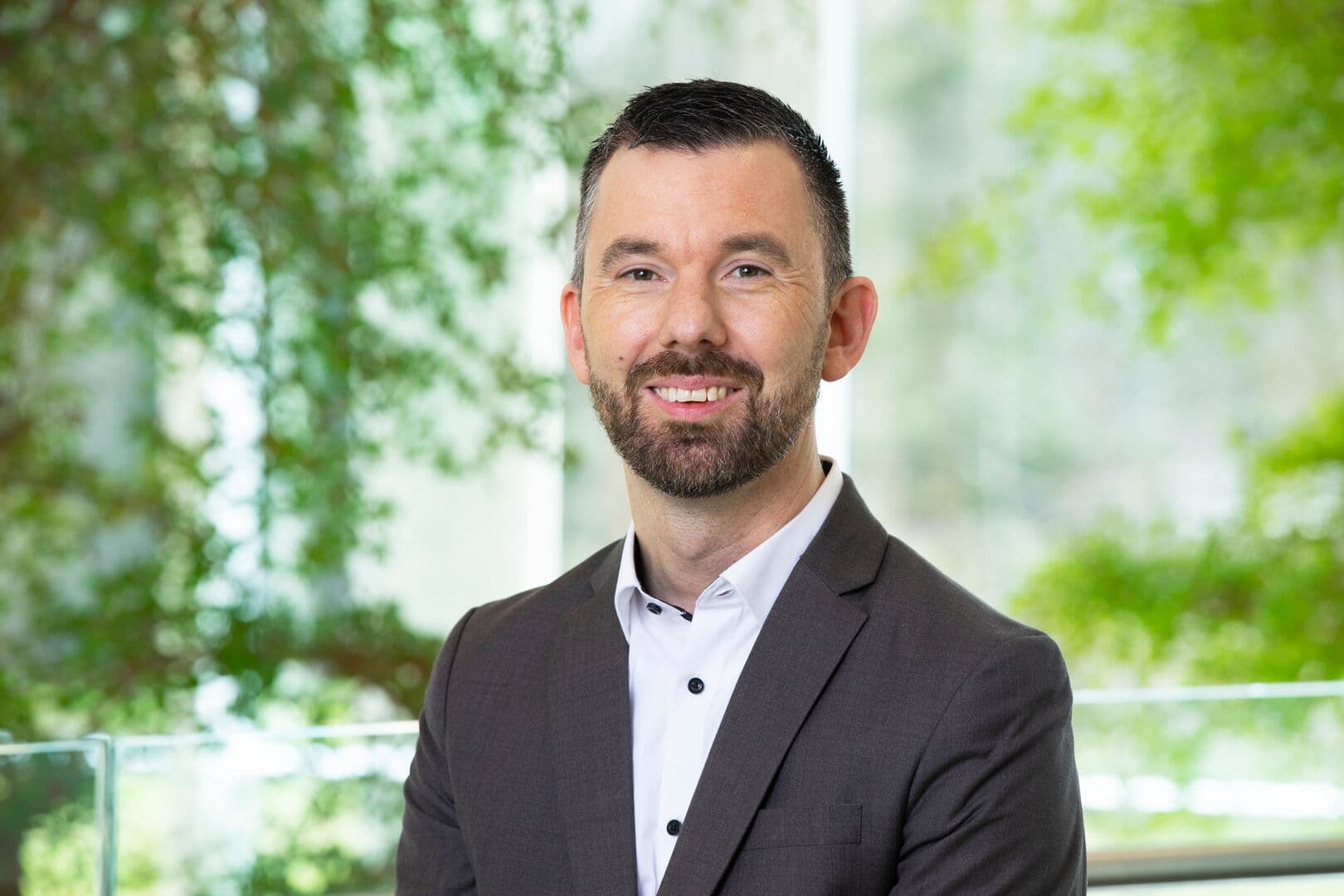
Offshore Wind
“In the future, offshore wind will undoubtedly become an important source of green electricity and green hydrogen. And it will make a decisive contribution to the success of Europe’s energy transition. With our concepts and technological designs, we are helping to make this vision a reality.” - Tim Meyerjürgens, COO at TenneT
Our approach
Thinking ahead through partnership
Tackling Europe’s green transition from offshore is a highly promising endeavour – and an enormous challenge. More and more wind farms as well as offshore grid connection systems must be built in less and less time. At the same time, fragile supply chains and sharply rising prices on the world market, such as for raw materials, make prompt and cost-efficient implementation increasingly difficult. We have to deal with these challenges together – in a collective feat of strength. Given these circumstances, we have made partnership a core value in our operations and fostered a fundamental change in values. Suppliers and clients are now forming even stronger partnerships. We are committing to each other and will – as a team – accelerate expansion in a safe and sustainable way, manage costs and conserve resources. Forming the foundation for this will be mutual trust and transparency.
And we mean it! In accordance with the 2 GW standard of our offshore grid connection systems, we have launched an innovative market approach. Instead of tendering each offshore grid connection system individually, we now form framework agreements for technological components for a whole series of systems with several partners at once.
Want to know why we do this?
Ask our experts

Marco Kuijpers, Director Large Projects Offshore at TenneT |
Why framework agreements? “With our framework agreements, we address the big picture and provide a holistic and concrete action plan to further accelerate offshore grid development in the North Sea – and to deliver in time, scope and budget.” Why now? "There is no time to lose. With another raise in offshore wind energy goals, Germany and the Netherlands have once more increased pressure on us as leading TSO in the North Sea. They trust in us and our strong expertise to get it done – and rightly so. With our framework agreements, we set the course now and help to secure an independent supply of clean energy in time." |
Our Impact
Integrating social responsibility from the very beginning
We aim to take a leading role also in terms of how responsibly we conduct our business. And even though we quickly need to ramp up our capacities in power production and transmission in the North Sea to satisfy growing demand for renewables, this can only happen in a sustainable way – with regards to the environment and people alike. We have formulated a Code of Conduct featuring clear guidelines on how we carry out construction, operations, and maintenance – always in accordance with safety rules and nature conservation laws.
|
|
We require every contractor to demonstrably reduce CO2 emissions according to the Environmental Cost Indicator methodology when carrying out operations for us. Furthermore, we only carry out our operations in sensitive habitats, such as the Wadden Sea, when regulations and time allows. |
|
|
When tendering, we encourage all our partners to choose materials that can be used longer, are the least harmful, and can be reused after use. To this end, we ask contract partners to investigate where materials come from as well as how they are processed, transported and subsequently reused. |
|
|
We ask contractors to critically look for opportunities to integrate nature into our technical designs. We are looking for ways to increase biodiversity and the quality of life for animals and plants. Hence, we expect our contractors to think proactively about which nature-enhancing measures are suitable to apply. And we have done so with success as numerous new measures have become standards: among these are artificial reefs, “fish hotels” or “bee hotels” on the roofs of our land stations. Some of our measures are already applied during installation. For example, with bubble curtains around our offshore platforms, we protect animals in the vicinity of the construction works. |
|
|
In addition to having an eye for technology, we also look out for people – our own and those of our suppliers and contractors, as defined in our Code of Conduct. Our safety vision is Zero Harm. To reach this, we have stepped up our commitment to safety and initiated the Safety Strategy 2025. Our goal is to improve our safety performance by making it even more central to our culture and everyday operations. For this to happen, we have translated our strategy into a Safety Roadmap, which contains specific measures that we will pursue to realise our Zero Harm vision. |
Contacts

Armine Egberink
Communications advisor Offshore Grid Development.
